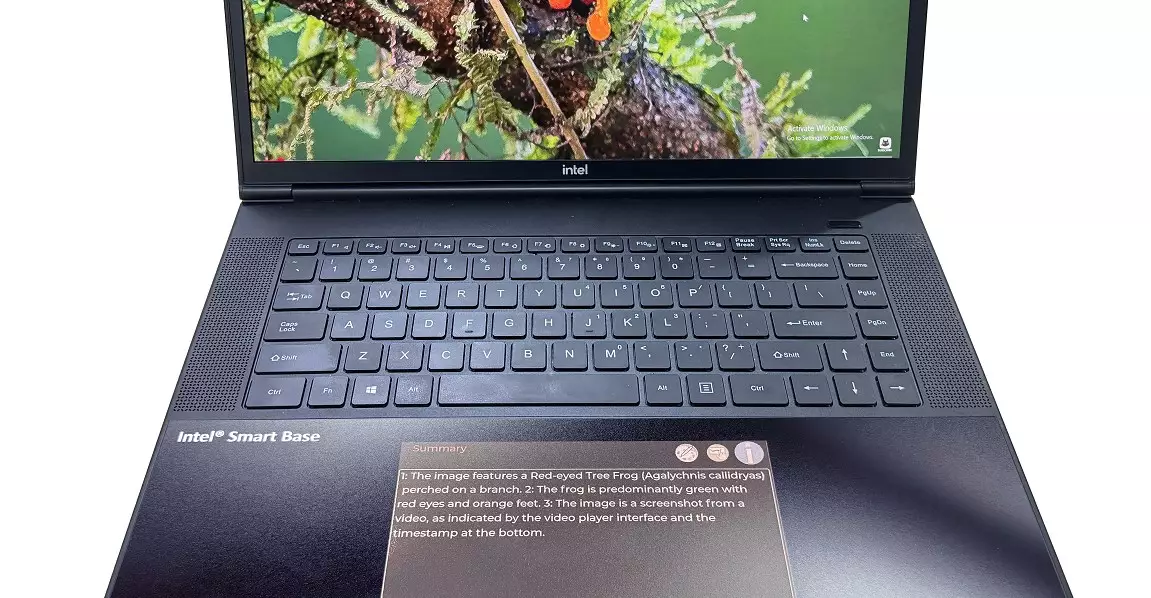In an era where productivity and efficiency are paramount, the integration of new technology into everyday devices can dramatically shift how we work. E Ink’s recent development of a color electronic paper touchpad for laptops promises to do just that. This isn’t a mere upgrade; it’s a bold reimagining of what a touchpad can be—more than just a navigational tool, but a dynamic control center for AI and productivity. Unlike traditional touchpads, which are small, static, and often overlooked, E Ink’s visual revolution aims to turn this peripheral into an active, energy-efficient, and highly functional interface.
What makes this move particularly compelling is E Ink’s mastery of low-power, high-visibility displays. Unlike LCD or OLED screens that sap battery life with constant illumination and color rendering, E Ink’s e-paper technology only consumes power when the display content changes. This characteristic could unlock a new level of efficiency, especially critical given the rise of AI-driven tasks that threaten to exhaust laptop batteries. Imagine a touchpad that can showcase real-time notifications, AI summaries, or quick settings without draining power—this could redefine portable computing.
Furthermore, E Ink’s design is not just about functionality but also about subtlety. The use of color e-paper for a touchpad might seem counterintuitive given the potential for distraction or reduced responsiveness, but if implemented thoughtfully, it could enhance multitasking without overwhelming the user. The concept of having AI-driven summaries or conversations floating beneath your fingertips offers a glimpse into a future where human-computer interaction becomes more intuitive and less intrusive. Instead of juggling numerous windows or abruptly switching between apps, users could seamlessly consult AI assistants and access relevant information in a natural, tactile manner.
Challenging Conventions and Setting New Standards for Laptop Design
E Ink’s move toward turning the touchpad into a dedicated AI companion rather than a secondary display hints at a larger strategic shift away from traditional laptop design. Currently, many laptops experiment with touch-enabled secondary screens—sometimes useful, often more gimmick than utility. But these LCD or OLED screens come with notable disadvantages: high energy consumption, potential for distraction, and added complexity in device design.
By utilizing E Ink’s low-power screens, manufacturers could address these issues gracefully. The static display characteristics mean notifications, shortcuts, or quick info snippets could persist without consumption of additional power, reducing the “battery drain anxiety” that plagues so many users. This innovation would not only improve daily efficiency but also push the boundaries of how laptops are conceptualized—moving towards a device that is smarter, more subtle, and more energy-conscious.
Critics may argue that color e-paper’s lower resolution and limited refresh rate could hinder functionality, especially for more graphic-intensive applications. However, for the envisioned use cases—quick AI summaries, shortcut menus, notifications—E Ink’s display technology fits purpose remarkably well. It prioritizes clarity and energy efficiency over perfect visual fidelity, aligning with an era where long battery life and instant access to information matter more than glossy visuals.
In essence, E Ink’s approach challenges the assumption that bigger, brighter screens are always better. Instead, it proposes an intelligent compromise—preserving battery life while providing dynamic, easily accessible content. This could set a new standard, encouraging other hardware manufacturers to rethink what a secondary display should be and how it can augment human productivity without increasing energy demands.
A Future Where Simplicity Meets Sophistication
Despite the current lack of detailed technical specs and concrete timelines, the concept itself signals a philosophical shift within the technological landscape. It signals a move away from the “more is better” paradigm toward “smarter and leaner.” By embedding AI nodes directly into a laptop’s periphery, E Ink pushes us closer to a future where human and machine interaction feels more natural and less cluttered.
This embrace of minimalism, combined with cutting-edge low-power tech, encapsulates the ongoing evolution of personal computing. The idea of an AI-centered, dedicated touchpad may seem like a niche innovation, but its implications are far-reaching. It encourages a mindset where devices are more modular, more energy-efficient, and better tailored to the real needs of users navigating an increasingly digital and AI-enabled world.
E Ink’s vision underscores a fundamental truth: technology’s ultimate goal should be to serve humanity better—reducing complexity without sacrificing utility. As this innovative touchpad begins to take shape in future laptops, it may well ignite a broader conversation about how we prioritize efficiency, accessibility, and intuitive design in the ongoing quest for technological excellence.


Leave a Reply